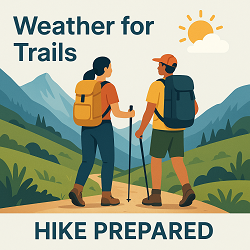Aspen Lake, WI Weather Forecast and Current Conditions
Current Conditions From Nearby Station

Feels Like 62°F
at
Current Conditions From Nearby Station

Feels Like 62°F
at
Point Forecast at a Glance







This Date in Weather History
1896 - A hurricane formed on September 22 and lasted until September 30. It formed directly over the Lesser Antilles and hit Cuba, Florida, Georgia, South and North Carolina, Virginia, Washington D.C., and Pennsylvania. Its maximum sustained winds were at 130 mph. The heaviest rainfall deposited in association with the storm was 19.96 inches at Glennville, Georgia. This hurricane was responsible for an estimated 130 deaths and $1.5 million in damage.
More on this and other weather history
Aspen Lake 7 Day Weather Forecast Details
Monday Sep 29

Night: Areas of fog after 2am. Partly cloudy, with a low around 50. East wind around 1 mph.
Tuesday Sep 30

Day: Areas of fog before 8am. Mostly sunny. High near 76, with temperatures falling to around 74 in the afternoon. Heat index values as high as 76. East southeast wind 2 to 6 mph.

Night: Mostly cloudy, with a low around 51. Southeast wind around 7 mph.
Wednesday Oct 1

Day: Partly sunny, with a high near 71. Southeast wind 6 to 9 mph.

Night: Partly cloudy, with a low around 52. South southeast wind around 8 mph.
Thursday Oct 2

Day: Sunny, with a high near 75.

Night: Mostly clear, with a low around 57.
Friday Oct 3

Day: Sunny, with a high near 80.

Night: A slight chance of showers and thunderstorms between 7pm and 1am, then a chance of showers and thunderstorms. Mostly cloudy, with a low around 60. Chance of precipitation is 40%.
Saturday Oct 4

Day: A chance of showers and thunderstorms. Mostly cloudy, with a high near 74. Chance of precipitation is 40%.

Night: A chance of rain showers. Mostly cloudy, with a low around 56. Chance of precipitation is 40%.
Sunday Oct 5

Day: A chance of rain showers. Partly sunny, with a high near 73. Chance of precipitation is 30%.

Night: A chance of rain showers. Mostly cloudy, with a low around 53. Chance of precipitation is 40%.
Monday Oct 6

Day: A chance of rain showers. Partly sunny, with a high near 65. Chance of precipitation is 40%.
Sun & Moon Monthly
Sunrise 7:06 AM
Sunset 6:55 PM
Last Light 7:25 PM
Moonset 11:08 PM

Contiguous United States Extremes
Mon's High Temperature
101 at 16 Miles Southwest Of Tecopa, CA
Mon's Low Temperature
23 at 32 Miles West-southwest Of Bynum, MT
Weather Folklore
Knots get tighter before a rain.
Current subscribers - login to your ClearSky account
How We Provide Better Local Weather
Current conditions: We use the nearest available station to your location - including professional MESONET/MADIS and local weather stations - often miles closer than regional airports.
Forecasts: National Weather Service point forecasts predict for your specific area, not broad regional zones, making them far more relevant to your location.

